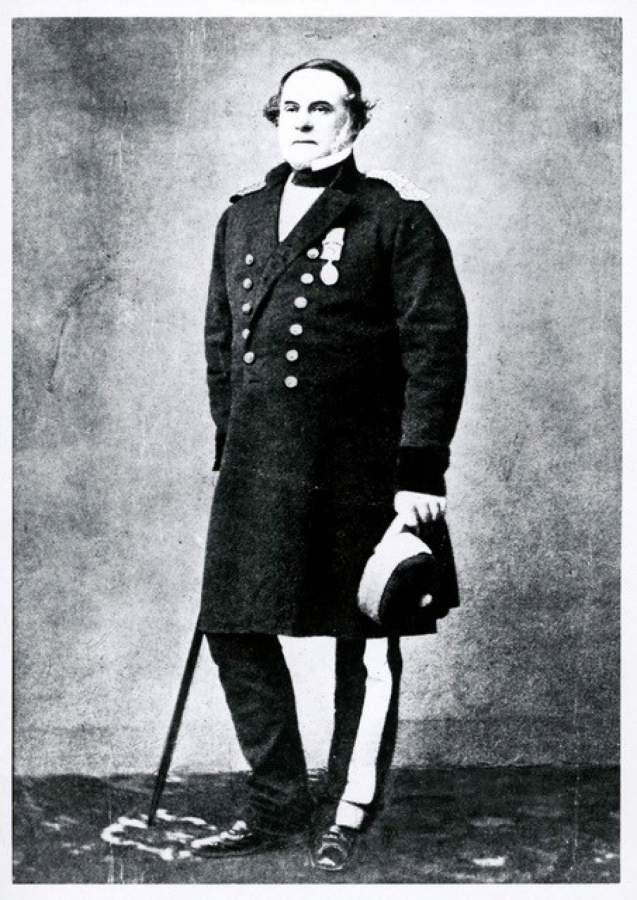With European features and light skin, James Douglas (1803-1877) passed for white, yet his heritage was a racial mix. Douglas spent his childhood in British Guiana (now Guyana) on slave-labor sugar plantations that his father and uncles partially owned. He and his younger dark-skinned sister were the offspring of his father’s convenient second “marriage” to a Creole woman, possibly by the name of Miss Richie.
When he turned 9, his father, John Douglas, sent him to a preparatory school in Scotland. There he lived with his father’s first family and half-siblings. Then at 16, his father sent him to the North West Company in Montreal, where he met John McLoughlin.
While the Hudson’s Bay Company negotiated a merger with the North West Company, Douglas rioted against it, even fighting a duel. This and other mutinous acts garnered a stern warning to steer clear of the Hudson’s Bay Company post with guns, swords, flags and fifes.
As he climbed Hudson’s Bay Company’s ranks from clerk to trader, Douglas became known as the “Scotch West Indian.” The Hudson’s Bay Company stationed him at Fort Vancouver in the 1830s as McLoughlin’s assistant. The company trusted him as acting factor whenever McLoughlin traveled away.
Slavery, whether by Indigenous peoples or in the Northwest country, unsettled him. He scolded Native peoples for practicing it and wrote to the Hudson’s Bay Company saying he denounced slavery as illegal and gave all persons held as slaves the fullest protection of “our little community.”
During the 1840s, Congress and Britain were sorting out the contested border between Canada and the U.S. as American immigrants and missionaries spilled into Oregon Country. McLoughlin worked to keep settlers far from the contested border. But the Hudson’s Bay Company felt threatened and worried that Americans’ complaints might spark a rapid takeover.
In 1842, George Simpson, Hudson’s Bay Company governor, who blamed McLoughlin for the immigrant surge, worried it foreshadowed the U.S. occupation. Simpson viewed Douglas more enthusiastically. So, knowing the Hudson’s Bay Company must move, he sent Douglas north, in part to set a stronger British claim on Vancouver Island.
Douglas reconnoitered locations where the corporation might establish new headquarters and decided on Vancouver Island, a safe distance from the U.S.-British contested borderlands. Douglas reported back that the Port of Camosack (the harbor where Victoria stands now) was an ideal location. In 1843, he named the stockade constructed there in honor of the youthful Queen Victoria.
The Oregon Treaty set the U.S.-Canadian border in 1846. The same year, McLoughlin passed through Fort Vancouver’s gates for the last time. This signaled the Hudson’s Bay Company’s twilight in the Oregon Territory. Fort Vancouver would fall into American hands in 1849, the same year Americans rushed to California seeking gold.
After Fort Vancouver, Douglas settled at Fort Victoria, where he flourished. There, he became chief factor, governor of the Vancouver colony and the second governor of the newly formed province of British Columbia. For his service, Queen Victoria knighted him in 1863. The “Scotch West Indian” rose to become the “Father of British Columbia” and imagined the new province a tolerant place for Black and Indigenous people. Unfortunately, white settlers believed otherwise.
Martin Middlewood is editor of the Clark County Historical Society Annual. Reach him at ClarkCoHist@gmail.com.



